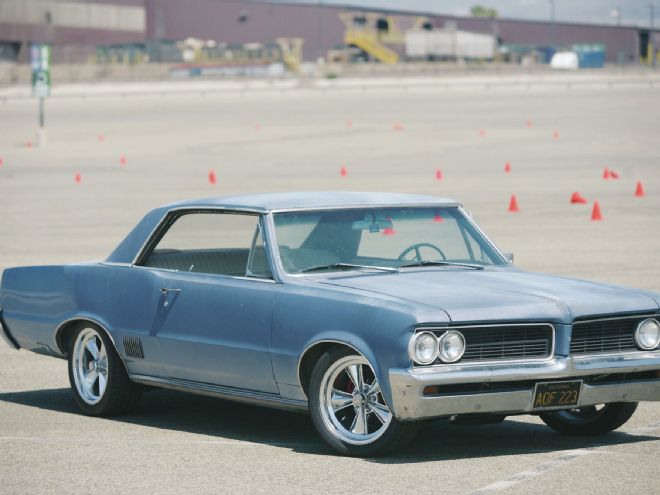
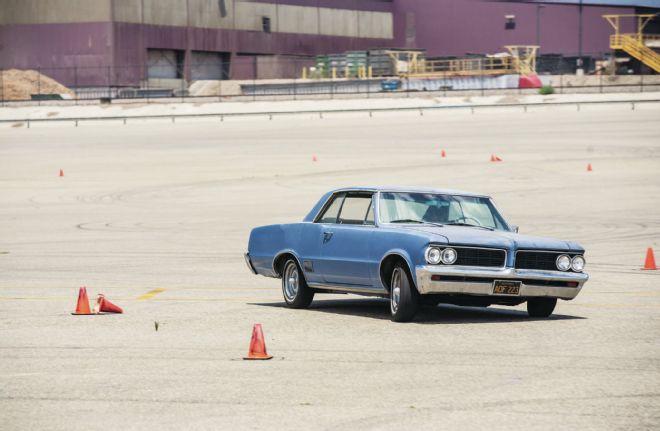
Here’s what we were starting with: worn suspension with beat-up shocks and skinny 14-inch tires that could barely manage to beat a nose-high gasser around an autocross. The tiny front tires and poor camber curve were causing understeer, with the only redeeming quality being that the rear could be throttle-steered due to its lack of traction.
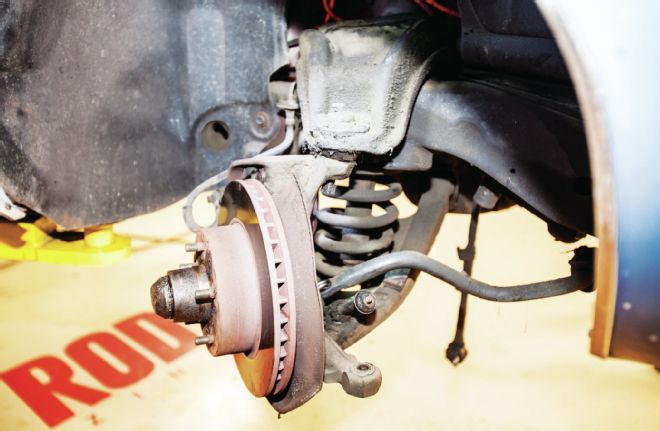
The F-body spindles allowed the previous owner to do a disc-brake conversion, but at the extremely low ride height (the bumpstops were completely removed) it gave the car bumpsteer and made it drive in the worst part of the suspension’s camber curve.
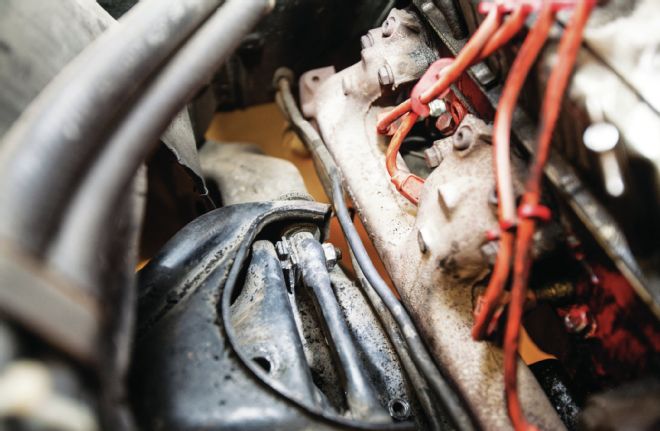
We began unbolting the factory parts and didn’t hit a snag until our cast-iron manifolds on our small-block prevented us from just unbolting the upper arm. We had to cut off the mounting studs.
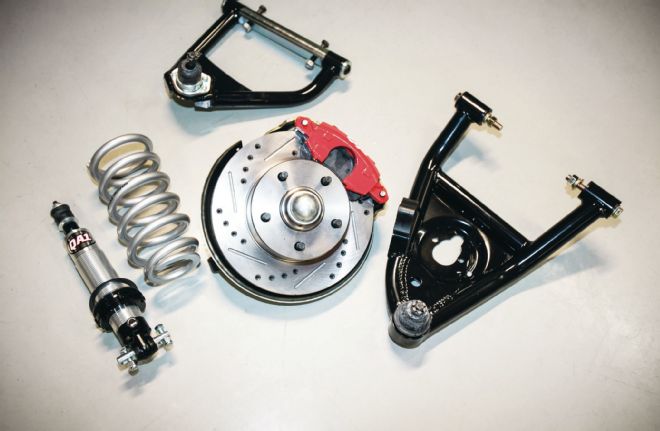
The main front suspension components from Classic Performance Products (CPP) are tubular upper and lower control arms, QA1 adjustable coilovers, and a factory-style disc brake spindle and single-piston caliper. The spindle, rotor, and caliper come assembled with new bearings installed.
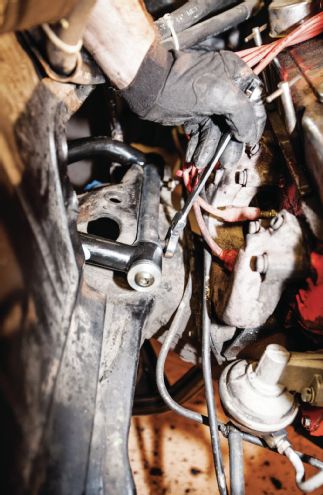
The CPP kit included new upper control-arm studs, so we pounded the remaining old studs from the frame and hammered the new studs into place so we could begin installing the new parts.
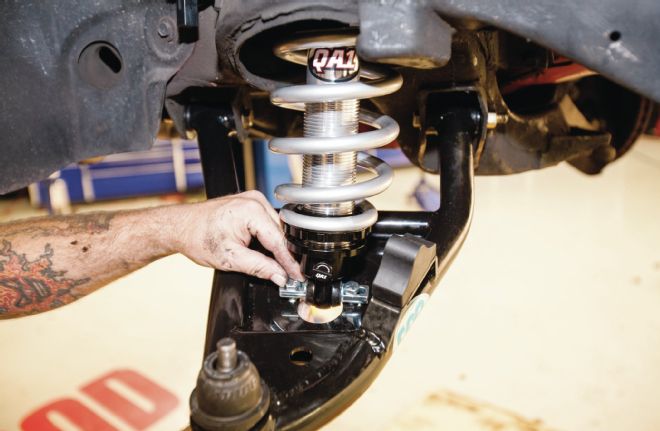
Both control arms simply bolted in place, but the coilover required some attention. We made sure the spring’s upper end fit correctly in the pocket of the frame and bolted it to the top of the lower control arm. The QA1 coilover includes a roller shim for easier adjustment.
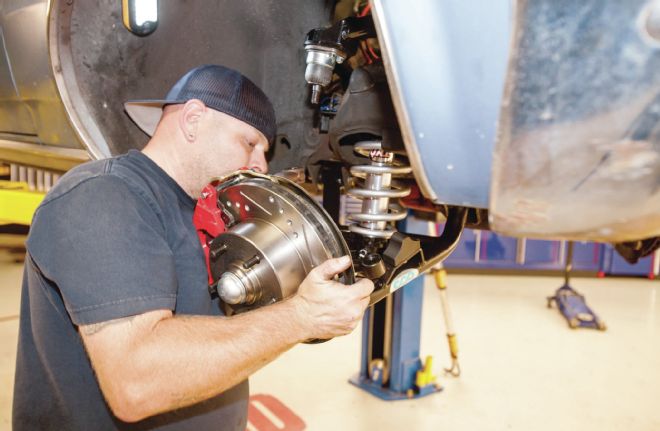
With the control arms and springs ready, we dropped the spindle/rotor/caliper assembly on the lower ball joint.
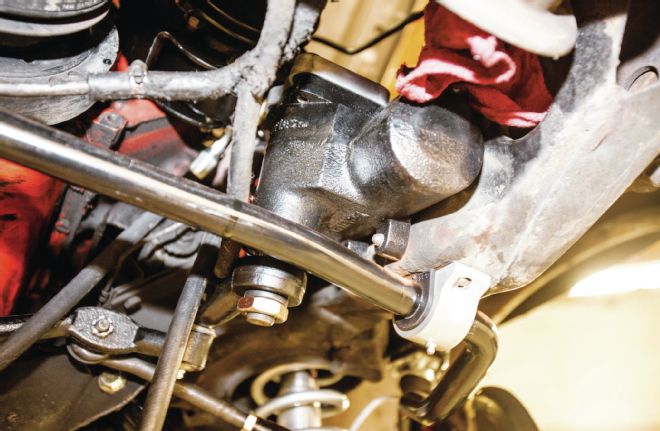
We then connected the caliper to the brake system with the supplied stainless steel brake lines.

A major improvement in handling and driveability came with a new sway bar and CPP’s 500-series steering box. The 14:1 ratio box is a quick ratio but not overboosted like factory steering boxes. The 11⁄8-inch front sway bar uses CPP’s new billet-aluminum mounts and is stiffer than the factory sway bar we replaced.
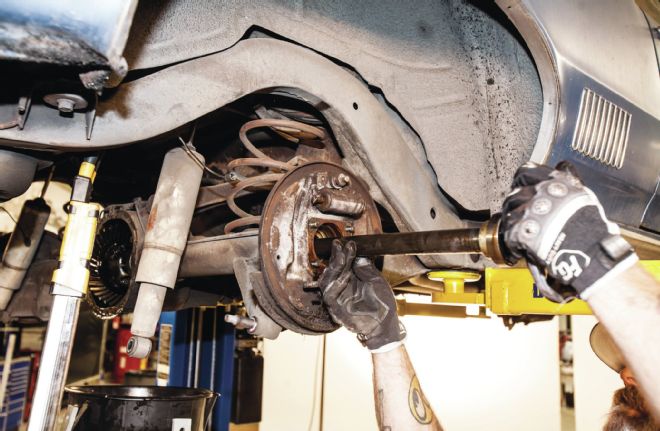
Our LeMans has a Pontiac rear axle, which meant no C-clips to worry about, and we could remove the axles and drum brake backing plates without removing the inspection plate and draining all the gear lube.
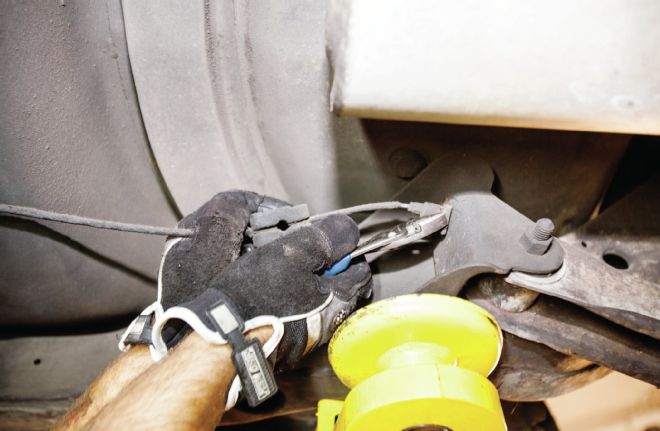
The CPP rear brakes include a cable-actuated parking brake, so we separated the rear parking brake cable and removed it along with the drum brake backing plate.
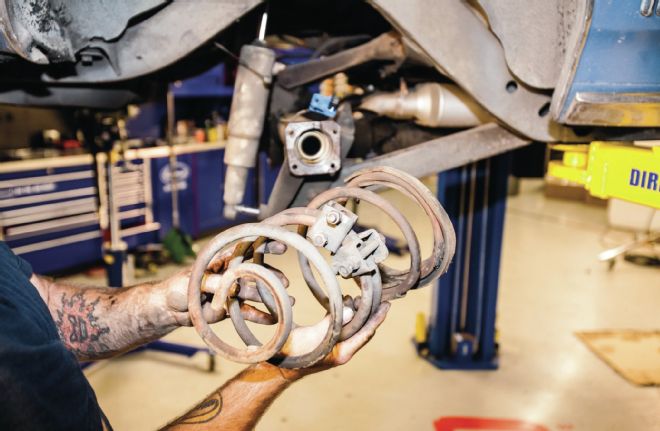
After unbolting the shock, we lowered the rear axle and pulled out the rear spring that had two lowering clamps installed.
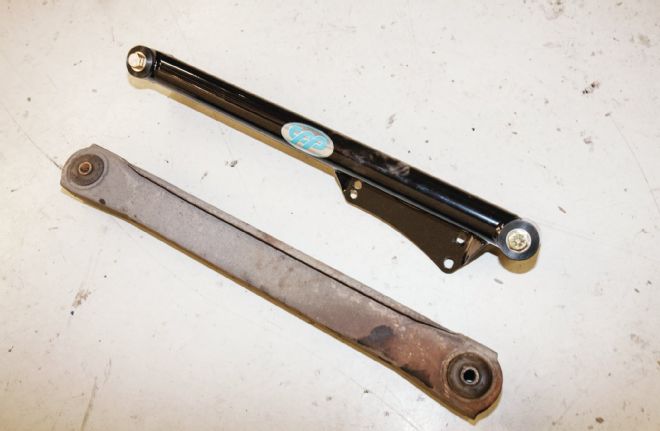
The lower arm came out without much fuss. Here it is compared to the new CPP lower control arm. The thick metal bracket is for a rear sway bar, which were optional on A-bodies although the CPP arms aren’t compatible with the factory sway bar.
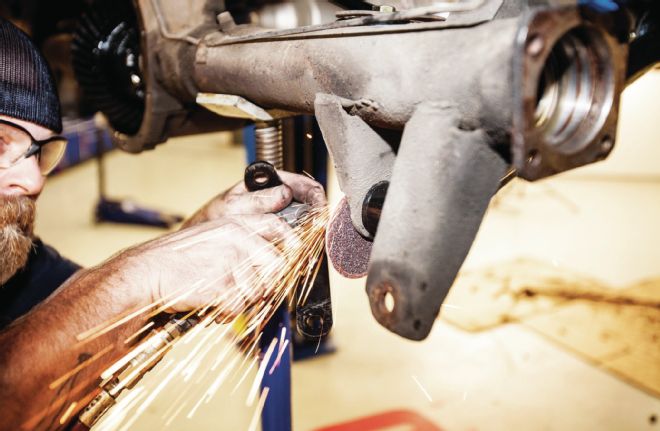
We thought we were ready to bolt the lower control arm in place when we realized the shock-relocating bracket needed to be installed. A bit of the control-arm mounting bracket had to be trimmed first.
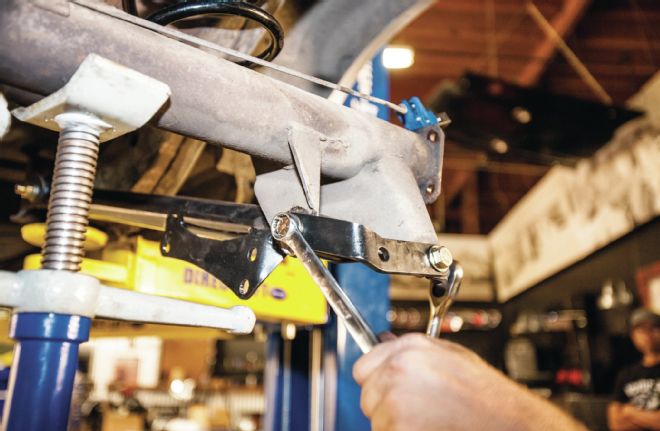
The relocating bracket makes the rear shocks more vertical and allows for wider rear-tire fitments.
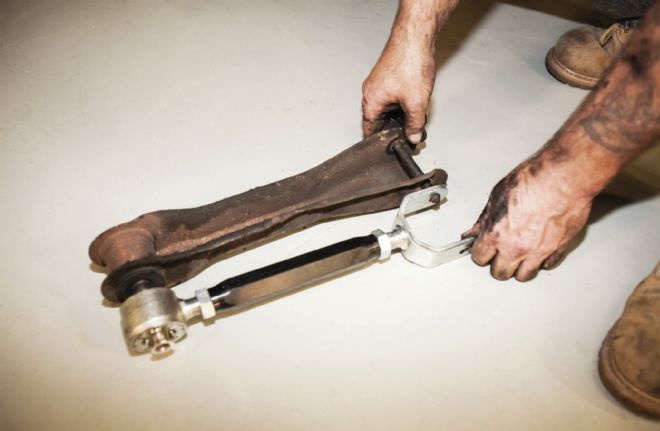
This is cool. CPP’s rear upper control arm is threaded and can be adjusted when it’s still mounted, allowing for pinion angle changes. We set our pinion angle to factory specs for now, so we set the length to match the old control arm by passing the mounting hardware through both ends of the arms.
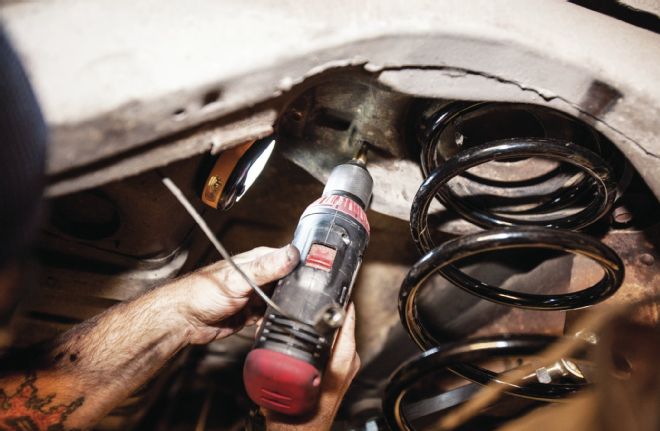
We used a step-drill bit to enlarge the shock-mounting holes in the chassis.
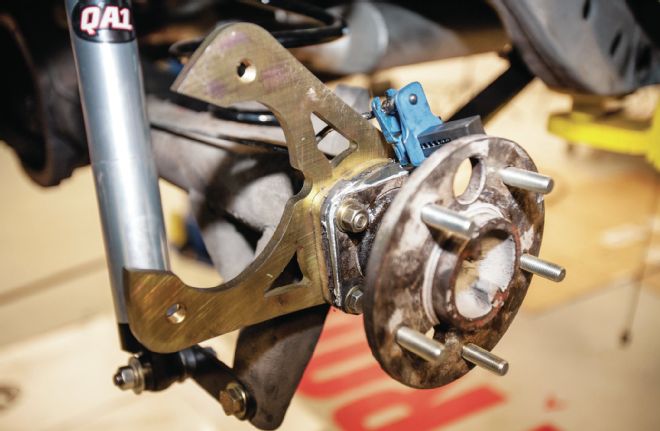
For the rear brakes, CPP uses this bracket that mounts on the back of the axle flange. Because we removed a backing plate, CPP included a spacer that allows the factory bearing retainer to be reused.
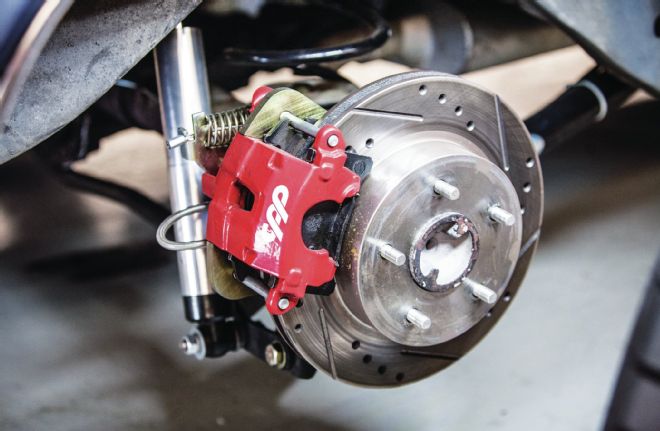
The rear brake calipers mount to the brackets and the kit includes new hard lines that lead to the fitting at the top of the rear axle and stainless braided line from the end of the axle to the caliper.
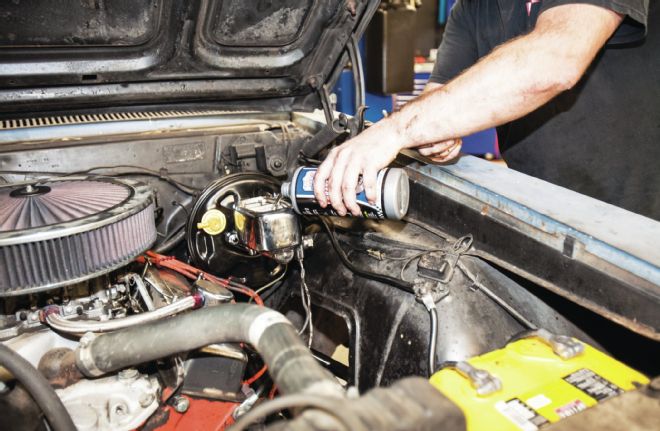
We also installed a polished CPP master cylinder and 11-inch brake booster. We had to extend the rear brake line, but our front lines were reused. After a thorough brake bleeding, we were ready to head to an alignment shop.
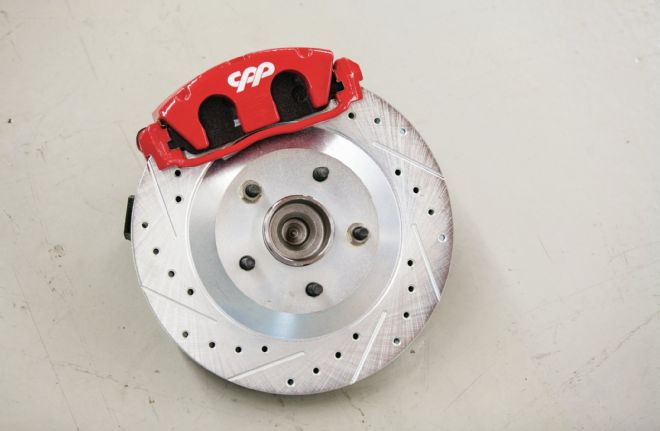
CPP offers a larger C5-style spindle that has larger brakes and a stronger bearing, but we wanted the ability to run 15-inch wheels.
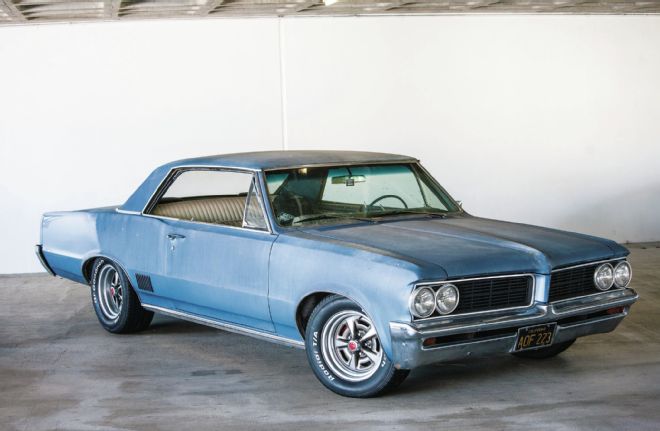
We chose Coker’s Pontiac Rally II wheel with vintage-style BFGoodrich Radial T/As. The fit in front with 235/60s on 15x7-inch wheels is perfect, and they don’t rub at all. In the rear, the 255/60s on 15x8-inch wheels are really tight on our 1964 Le Mans, although they look great. We’ve found that at full compression they rub the sidewall, so we’ll need to massage the inner wheelwell.
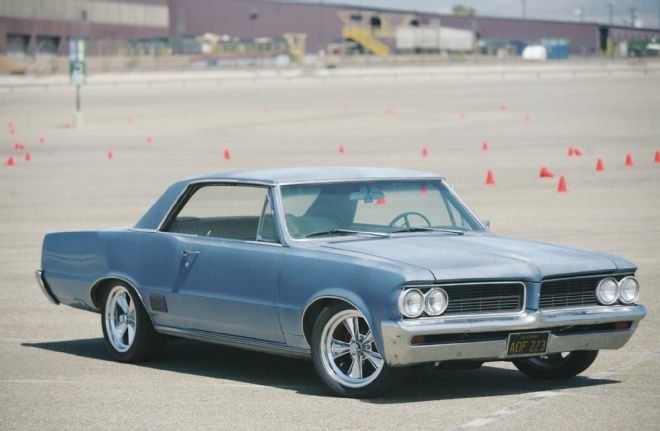
For autocross duties, we wanted to show off what modern tires could do, so we opted for a set of BFGoodrich Sport Comp II tires and T71R American Racing Wheels. We’re running 235/45 tires on 17x7-inch wheels in the front and 245/45 on 17x8-inch wheels in the rear.
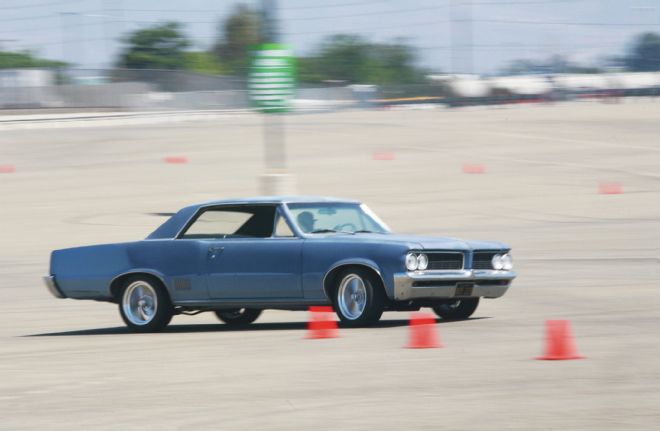
On the same course as our baseline, with the Sport Comp IIs and 17s, the LeMans knocked 8 seconds off its lap time. We may have shaved a bit with some shock tuning, but the tire pressure was pretty good and the car felt great.